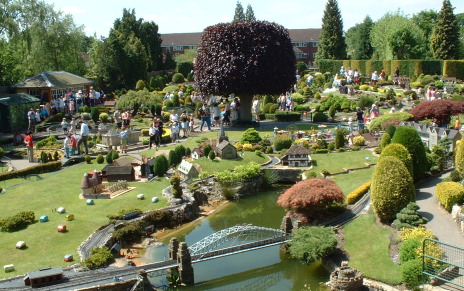
| Previous | Next | Printer friendly |
A model of good maintenance
We can learn a lot by looking at excellent examples of long-term maintenance outside IT.
One of my favourite places in the whole world is Bekonscot Model Village. Located in the town where I grew up about 20 miles west of London, Bekonscot is an excellent family attraction. It has an acre or two of detailed, high-quality models showing England in the 1930s. It has model seas and seaside villages, farms and towns. It boasts one of the UK's finest model railways weaving through the villages. It is exceptionally family friendly, relatively cheap admission, and good facilities.

I really enjoy myself every time I go to Bekonscot (which is quite frequently, because my young children love the trains). Even though I visit once or twice a year, there is always something new to see. Models are added and changed, though you never see signs of work in progress.
What impresses me most, though, is that Bekonscot is almost 80 years old. The England it depicts was current when it was founded.
Bekonscot does not show its age. It is one of the best examples of long-term maintenance that I have seen. The models are well-maintained. The trains are reliable. The facilities are clean. The gardens are fresh - the many bonsai trees have not overgrown their surroundings.
The village changes. New models are added, and old models renovated. From time-to-time, it has undergone significant transformations. For example, in the 1990s it stopped trying to keep up with real-world changes, and was remodelled to turn the clock back to the 1930s.
What can we learn from this excellent example of real-world maintenance?
- Things can last indefinitely if you manage them to do so. I have been to plenty of tourist attractions that are managed like typical IT systems - a major development, and then let to run down over the years, before another major redevelopment. Bekonscot is much better for taking the opposite view, and being constantly maintained and renewed.
- Embrace both step change and incremental change. If it needs to change, then change it. Do as good a job as the original developers.
- Work within the structure. If you go to Bekonscot, you don't trip over new buildings in the middle of the paths, or find seaside buildings in model farms. Changes fit into the designed structure, until the structure has to change.
- Take pride in maintenance. The staff at Bekonscot have every reason to be proud of the model village. You can see the pride and enjoyment in the models themselves. If you get down on your hands and knees and peer into the windows of the shops, you can see details and humour that just would not be there if the staff did not really care. I suspect they get a great deal of satisfaction by knowing that they are contributing to an ongoing masterpiece, rather than just meeting project deadlines.
If you get the chance, do visit Bekonscot (especially if you have young children). And have a think about how you could apply their approach to maintenance to the management of IT in your organisation.
Next: Ownership and ownabilitySubscription
Latest newsletter:
Magical metadata
We use the term "metadata-driven" to describe IT solutions in which functionality is defined in data. Taking this to the extreme can provide unparalleled levels of speed, simplicity and versatility.
Read full newsletter
System governance
System governance helps you implement high-quality systems, manage existing systems proactively, and improve failing systems.
Copyright © 2005-2015 Minimal IT Ltd. All rights reserved.
Minimal IT: research, training, consultancy and software to reduce IT costs.
